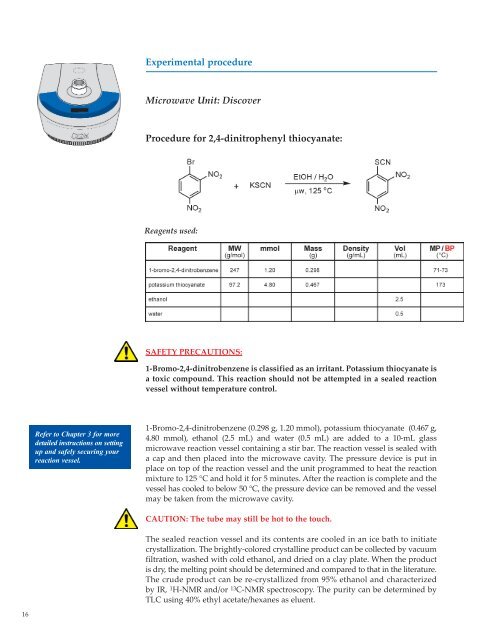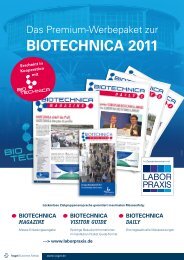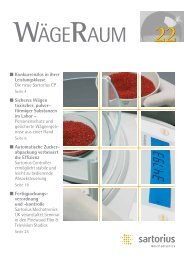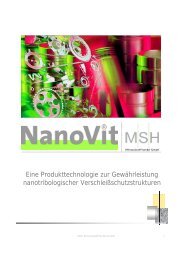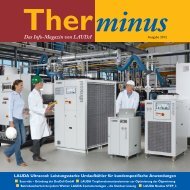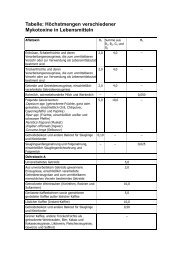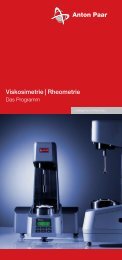Clean, Fast Organic Chemistry - LaborPraxis
Clean, Fast Organic Chemistry - LaborPraxis
Clean, Fast Organic Chemistry - LaborPraxis
Create successful ePaper yourself
Turn your PDF publications into a flip-book with our unique Google optimized e-Paper software.
16<br />
Refer to Chapter 3 for more<br />
detailed instructions on setting<br />
up and safely securing your<br />
reaction vessel.<br />
Experimental procedure<br />
Microwave Unit: Discover<br />
Procedure for 2,4-dinitrophenyl thiocyanate:<br />
Reagents used:<br />
SAFETY PRECAUTIONS:<br />
1-Bromo-2,4-dinitrobenzene is classified as an irritant. Potassium thiocyanate is<br />
a toxic compound. This reaction should not be attempted in a sealed reaction<br />
vessel without temperature control.<br />
1-Bromo-2,4-dinitrobenzene (0.298 g, 1.20 mmol), potassium thiocyanate (0.467 g,<br />
4.80 mmol), ethanol (2.5 mL) and water (0.5 mL) are added to a 10-mL glass<br />
microwave reaction vessel containing a stir bar. The reaction vessel is sealed with<br />
a cap and then placed into the microwave cavity. The pressure device is put in<br />
place on top of the reaction vessel and the unit programmed to heat the reaction<br />
mixture to 125 °C and hold it for 5 minutes. After the reaction is complete and the<br />
vessel has cooled to below 50 °C, the pressure device can be removed and the vessel<br />
may be taken from the microwave cavity.<br />
CAUTION: The tube may still be hot to the touch.<br />
The sealed reaction vessel and its contents are cooled in an ice bath to initiate<br />
crystallization. The brightly-colored crystalline product can be collected by vacuum<br />
filtration, washed with cold ethanol, and dried on a clay plate. When the product<br />
is dry, the melting point should be determined and compared to that in the literature.<br />
The crude product can be re-crystallized from 95% ethanol and characterized<br />
by IR, 1H-NMR and/or 13C-NMR spectroscopy. The purity can be determined by<br />
TLC using 40% ethyl acetate/hexanes as eluent.


